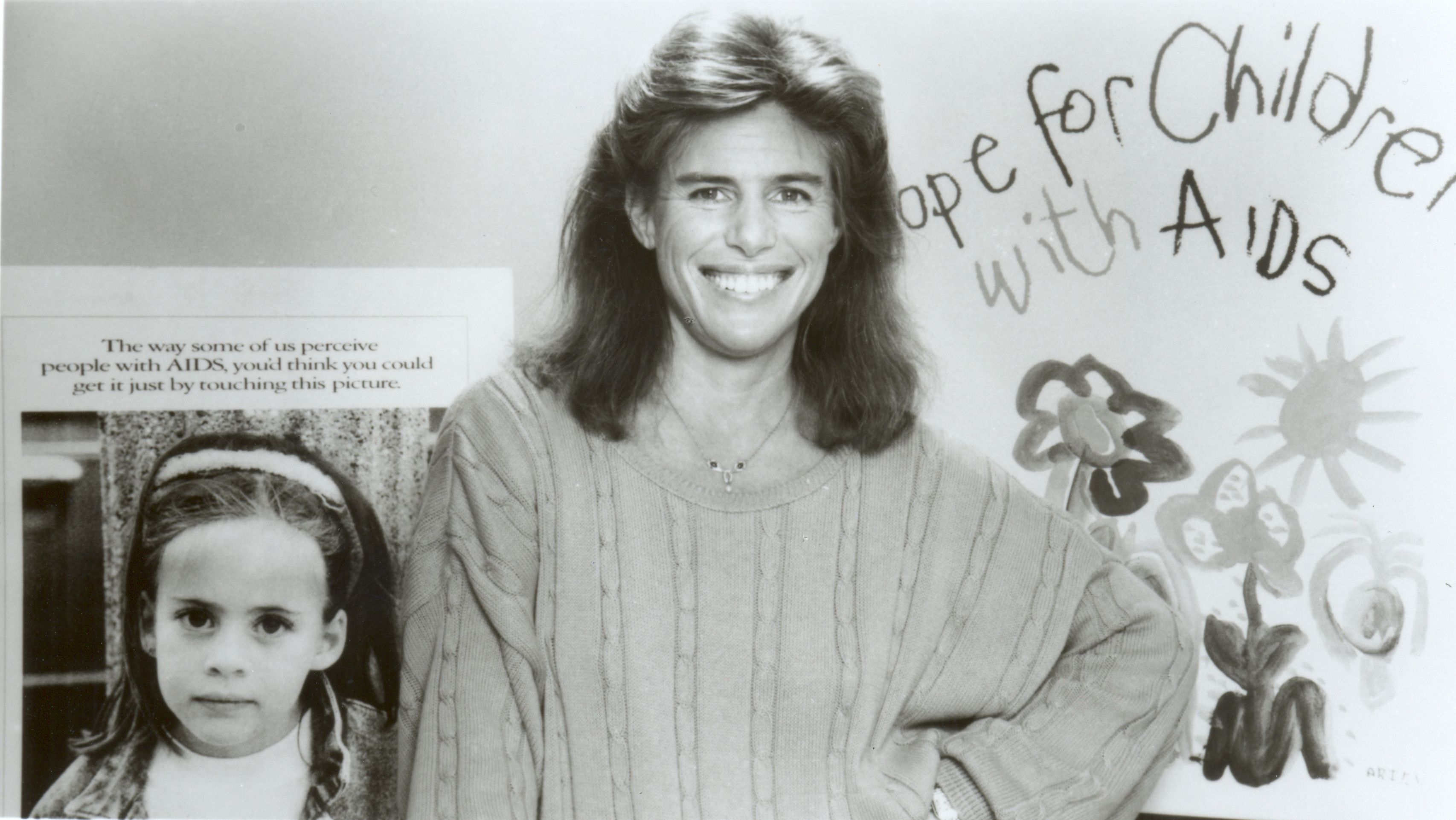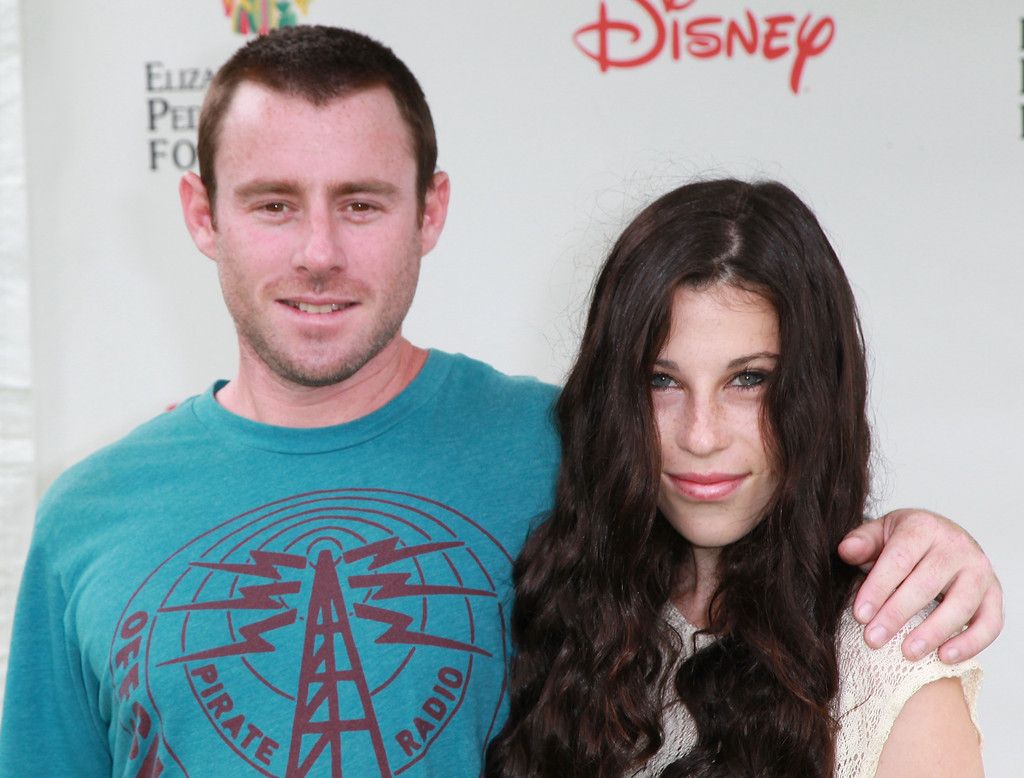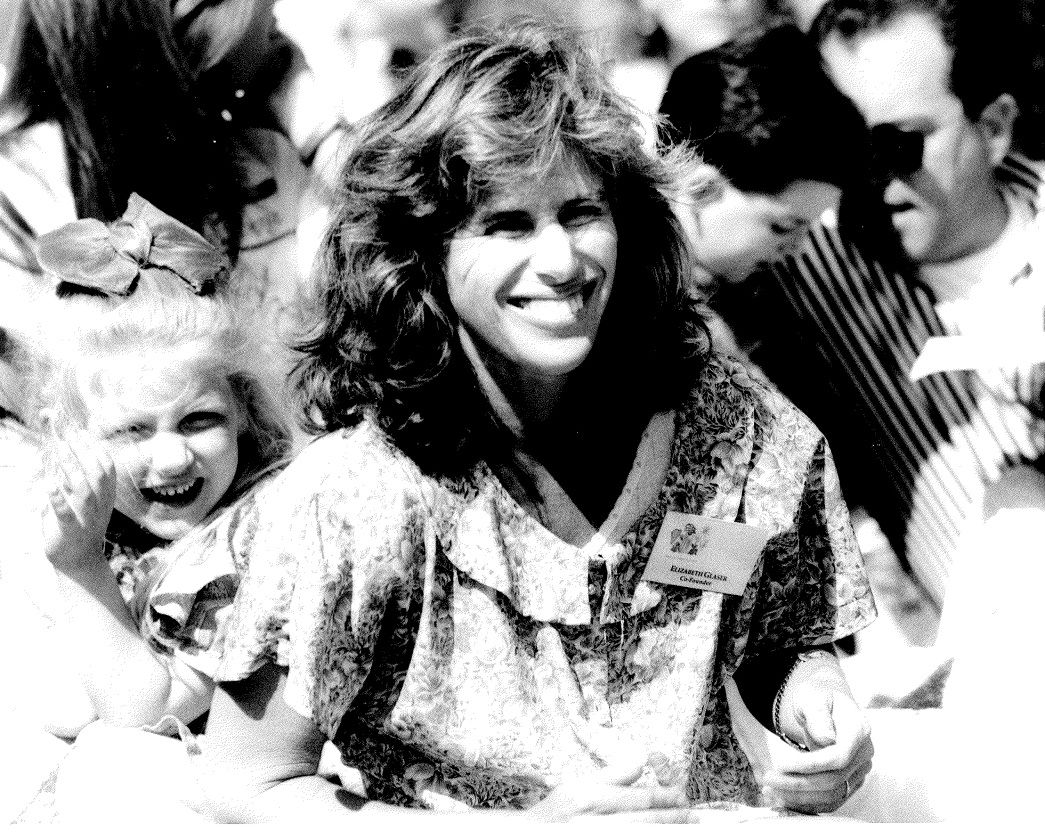Remembering Elizabeth Glaser: The Funeral That Changed The Conversation
The name Elizabeth, you know, it means so many things to different people, doesn't it? For some, it might bring to mind long reigns and royal duties, a truly grand history, as a matter of fact. But for others, it calls to mind a different kind of strength, a deeply personal fight that touched countless lives. Today, we're going to talk about Elizabeth Glaser, a woman whose bravery in the face of immense hardship, you know, really left an enduring mark. Her story, particularly the events surrounding her funeral, offers a powerful look at how one person's struggle can spark a massive movement for change. It's almost incredible, actually, how much impact she had.
Her journey, in a way, was one of unimaginable pain, yet it transformed into a beacon of hope for many. We often think about public figures and their farewells, but Elizabeth Glaser's funeral was more than just a ceremony; it was a profound moment of reflection, a call to action that resonated far beyond the immediate attendees. It was a time when the world, quite frankly, had to confront a silent epidemic that was, you know, taking too many innocent lives.
This article aims to honor Elizabeth Glaser's memory by exploring her life, her unwavering advocacy, and the significant impact of her passing. We'll consider the circumstances that led to her vital work and why her funeral, in particular, became such a pivotal event in the fight against pediatric AIDS. It’s a story, you know, that really deserves to be remembered and understood.
Table of Contents
- Biography: Elizabeth Glaser
- The Health Battle: A Family's Ordeal
- A Voice for the Voiceless: Elizabeth's Advocacy
- The Day of Mourning: Elizabeth Glaser Funeral
- A Legacy That Lives On: The Foundation's Work
- Impact and Remembrance: Why Her Story Still Matters
- Frequently Asked Questions About Elizabeth Glaser
- Conclusion
Biography: Elizabeth Glaser
Elizabeth Glaser was born Elizabeth Meyer in New York City on November 11, 1947. She grew up in a very creative and supportive family, you know, with her father being a well-known television producer and her mother a homemaker. She pursued her education at the University of Colorado, where she studied political science, which, you know, probably hinted at her future as an advocate. After college, she moved to Los Angeles and started a career in public relations, meeting her future husband, Paul Michael Glaser, who was, you know, quite a famous actor at the time, particularly known for his role in "Starsky & Hutch."
Their life together seemed, in some respects, like a dream, filled with joy and the promise of a bright future. They had two children, Ariel and Jake, who were, you know, truly the center of their world. Elizabeth was, by all accounts, a devoted mother and a loving partner. She had a certain warmth about her, a way of connecting with people that was, you know, really special. Her early life, quite frankly, gave little indication of the extraordinary challenges she would face or the incredible impact she would ultimately have on the world. It’s amazing, actually, how life can take such unexpected turns.
Personal Details & Bio Data
| Detail | Information |
|---|---|
| Full Name | Elizabeth Meyer Glaser |
| Born | November 11, 1947 |
| Died | December 3, 1994 |
| Place of Birth | New York City, New York, USA |
| Nationality | American |
| Spouse | Paul Michael Glaser |
| Children | Ariel Glaser (daughter, deceased), Jake Glaser (son) |
| Known For | Co-founder of the Elizabeth Glaser Pediatric AIDS Foundation; HIV/AIDS activist |
| Cause of Death | AIDS-related complications |
The Health Battle: A Family's Ordeal
The story of Elizabeth Glaser's health battle began in 1981, a time when, you know, very little was understood about HIV and AIDS. She received a blood transfusion during the birth of her first child, Ariel. Unbeknownst to anyone, the blood she received was contaminated with HIV. This was, arguably, a tragic twist of fate, a truly devastating moment that would forever alter her family's path. For years, Elizabeth and her family lived without knowing the silent threat that was, you know, already within them.
The first sign of trouble came in 1985 when their daughter, Ariel, started showing mysterious symptoms. After months of tests and agonizing uncertainty, the family received the heartbreaking news: Ariel had AIDS. It was, quite frankly, a diagnosis that seemed impossible, especially for a child. Further testing revealed that Elizabeth also had HIV, and she had unknowingly passed the virus to Ariel during childbirth. Their younger son, Jake, was also found to be HIV-positive, though he remained asymptomatic for a longer period. This was, you know, an utterly devastating blow, a nightmare that no family should ever have to face.
The emotional toll on the Glaser family was immense. They faced not only the terrifying reality of a deadly illness but also the profound stigma and lack of knowledge surrounding AIDS at the time. There was, so to speak, a great deal of fear and misunderstanding, even among medical professionals. Finding adequate care for Ariel, particularly, became a constant struggle. This personal ordeal, in a way, became the catalyst for Elizabeth's extraordinary activism. She realized that if her family, with their resources, faced such challenges, what about other families who were, you know, less fortunate?
A Voice for the Voiceless: Elizabeth's Advocacy
After Ariel's diagnosis, Elizabeth Glaser found herself in a truly desperate situation. There were, you know, hardly any treatments available for children with AIDS, and research into pediatric HIV was severely underfunded. Instead of succumbing to despair, Elizabeth decided to fight. She channeled her grief and fear into a powerful determination to change things, to be a voice for children who, you know, couldn't speak for themselves. This was, actually, a turning point not just for her, but for the entire movement.
In 1988, along with her close friends Susie Zeegen and Susan DeLaurentis, Elizabeth co-founded the Pediatric AIDS Foundation, which was later renamed the Elizabeth Glaser Pediatric AIDS Foundation (EGPAF). Their mission was clear: to fund research into pediatric HIV, to prevent mother-to-child transmission, and to advocate for children living with AIDS. This was, you know, a truly groundbreaking effort at a time when many were still hesitant to even discuss the disease openly. They started small, but their vision was, quite frankly, enormous.
Elizabeth became a tireless advocate. She spoke publicly about her family's struggle, breaking down barriers of silence and shame. Her testimony before Congress in 1990, where she shared Ariel's story and urged for more funding, was, in a way, incredibly moving and impactful. She spoke with such honesty and vulnerability, you know, that it truly resonated with people. She helped put a human face on the epidemic, showing that AIDS was not just affecting certain groups, but could touch any family. Her courage, in fact, inspired many others to join the fight, demonstrating just how much one person's voice can achieve.
She met with political leaders, appeared on television, and wrote articles, all while battling her own declining health. Her message was simple yet profound: children were suffering, and they deserved hope, treatment, and compassion. She argued that every child, regardless of their circumstances, deserved a chance at a healthy life. This dedication, you know, really highlighted her strength of character and her unwavering commitment to others. She was, essentially, a force of nature, driven by love for her children and for all children affected by this illness.
The Day of Mourning: Elizabeth Glaser Funeral
Elizabeth Glaser passed away on December 3, 1994, at the age of 47, after a long and courageous battle with AIDS. Her death, you know, brought a profound sense of loss to many, not just her family and friends, but also to the countless people she had inspired and helped. The news of her passing resonated deeply within the activist community and beyond, as she had become, essentially, a symbol of hope and perseverance in the face of a devastating illness. It was, quite frankly, a very sad day for many, a moment of collective grief.
The Elizabeth Glaser funeral was a private service, reflecting her family's desire for a quiet moment of remembrance. While details of the private ceremony are not widely publicized, the impact of her death was, you know, very public. It prompted a renewed focus on pediatric AIDS and the ongoing work of the foundation she had helped create. Her passing served as a poignant reminder that the fight was far from over, and that her legacy needed to continue. It was, in a way, a somber occasion, yet it also solidified her place in history as a true champion for children's health.
Her funeral, in a broader sense, wasn't just about saying goodbye to a person; it was about acknowledging the end of a remarkable life dedicated to a crucial cause. It brought into sharp relief the human cost of the AIDS epidemic and the vital importance of the work Elizabeth had started. Many people, you know, felt a personal connection to her story, and her death spurred them to action. It was, arguably, a moment that galvanized support for the foundation and its mission, ensuring that her voice, even in absence, would continue to be heard. The impact was, really, quite significant.
The media coverage surrounding her passing, you know, further highlighted her contributions and the ongoing need for research and support. Her story had already touched millions, and her death served to reinforce the urgency of the cause she championed. It was, basically, a moment of public mourning for a woman who had, quite frankly, given so much of herself to others. The quiet dignity of her farewell, too, underscored the profound personal nature of her battle, even as her public legacy grew larger.
A Legacy That Lives On: The Foundation's Work
The Elizabeth Glaser Pediatric AIDS Foundation (EGPAF) stands as a powerful and enduring testament to Elizabeth's vision and tireless efforts. Her passing, far from diminishing the movement, actually strengthened it, inspiring others to pick up the torch. The foundation, you know, has grown into a global leader in the fight to end AIDS in children, a truly remarkable achievement. It's almost incredible, really, how much it has accomplished since her passing.
Since its inception, EGPAF has, in a way, made monumental strides. They have supported HIV prevention, care, and treatment services in more than 20 countries around the world. Their work has, you know, directly contributed to a significant decline in new pediatric HIV infections globally. This includes funding cutting-edge research, implementing programs to prevent mother-to-child transmission, and providing support to families affected by HIV. It’s, frankly, a massive undertaking, and they've done an amazing job.
One of the foundation's key achievements has been advocating for and implementing programs that provide antiretroviral therapy (ART) to pregnant women living with HIV. This has, you know, dramatically reduced the rate of HIV transmission from mothers to their babies. They have also worked to increase access to testing and treatment for children, ensuring that more young lives are saved and improved. This work, you know, really embodies Elizabeth's original passion and determination. It shows just how much positive change can come from one person's idea.
The foundation also continues to raise awareness and educate the public about pediatric AIDS, fighting the stigma that still surrounds the disease. They champion policies that support global health initiatives and ensure that children are not forgotten in the broader fight against HIV. It’s a continuous effort, you know, but one that has yielded incredible results. The legacy of Elizabeth Glaser, in this respect, is not just a memory, but a living, breathing force for good in the world. Learn more about pediatric AIDS research on our site, and find out how you can contribute to this important cause by visiting our impact page.
Impact and Remembrance: Why Her Story Still Matters
Elizabeth Glaser's story, and the impact of her funeral, continues to resonate today, even decades after her passing. She transformed a personal tragedy into a public mission, demonstrating the power of advocacy and the importance of compassion. Her legacy reminds us that even in the darkest of times, hope can be found, and that ordinary people can, you know, achieve extraordinary things. It’s a very powerful lesson, actually, for all of us.
Her courage in speaking openly about HIV at a time of widespread fear and misinformation, you know, helped to change public perception of the disease. She humanized the epidemic, showing that it could affect anyone, regardless of their background. This openness, frankly, was revolutionary and paved the way for greater understanding and empathy. It helped to break down the walls of silence and stigma that had, you know, surrounded the disease for so long. Her willingness to share her family's pain, too, made her incredibly relatable to many.
The Elizabeth Glaser Pediatric AIDS Foundation, her enduring gift to the world, has saved countless lives and continues to work towards a future free from pediatric AIDS. Her advocacy efforts helped secure crucial funding for research and treatment, which has, you know, profoundly impacted global health. Her story is a powerful reminder that vigilance and continued effort are necessary to address public health challenges. It shows, in a way, that the fight is not over, but that progress is possible with dedication and heart.
Today, as we remember Elizabeth Glaser, we also remember the profound impact of her life and the critical work she started. Her funeral, while a private moment of grief, became a public symbol of a fight that needed to be fought, and won. It stands as a testament to her enduring spirit and the power of a mother's love to change the world. Her story, you know, really inspires us to keep pushing for a healthier, more compassionate future for all children. It’s, honestly, a legacy that will continue to inspire for generations to come.
Frequently Asked Questions About Elizabeth Glaser
What was Elizabeth Glaser known for?
Elizabeth Glaser was known for her tireless advocacy in the fight against pediatric AIDS. She co-founded the Elizabeth Glaser Pediatric AIDS Foundation (EGPAF) after she and her two children, Ariel and Jake, were diagnosed with HIV. Her public speaking and activism, you know, played a crucial role in raising awareness and funding for research and treatment for children living with HIV. She basically put a human face on the epidemic, which was, quite frankly, very important.
How did Elizabeth Glaser contract HIV?
Elizabeth Glaser contracted HIV through a contaminated blood transfusion she received in 1981 during the birth of her daughter, Ariel. At that time, you know, very little was known about HIV, and blood screening procedures were not yet in place to detect the virus. She then unknowingly passed the virus to Ariel and later to her son, Jake, through childbirth and breastfeeding. It was, truly, a tragic circumstance that highlighted the need for better safety measures.
What is the Elizabeth Glaser Pediatric AIDS Foundation?
The Elizabeth Glaser Pediatric AIDS Foundation (EGPAF) is a global non-profit organization dedicated to ending AIDS in children worldwide. Founded in 1988, it funds research, implements prevention and treatment programs, and advocates for policies that support children and families affected by HIV. The foundation has, you know, made significant progress in reducing mother-to-child transmission of HIV and providing care to millions. It’s, honestly, a remarkable organization that continues her vital work.
Conclusion
The story of Elizabeth Glaser, and the somber occasion of her funeral, serves as a powerful reminder of one woman's incredible strength and her lasting impact on the world. She faced unimaginable personal hardship, yet she chose to transform her pain into a purpose, becoming a beacon of hope for countless families affected by HIV and AIDS. Her advocacy, born from a mother's fierce love, you know, fundamentally changed the conversation around pediatric AIDS, bringing it out of the shadows and into the light. It’s a testament, frankly, to the power of human spirit.
Her legacy, embodied by the thriving Elizabeth Glaser Pediatric AIDS Foundation, continues to save lives and push for a future where no child is born with HIV. The work she started, you know, has led to significant advancements in prevention and treatment, showing just how much one person's determination can achieve. As we reflect on her life and the profound significance of her passing, we are reminded of the ongoing need for compassion, research, and unwavering commitment to global health. Her story, in a way, truly inspires us to keep fighting for a better world for all children.

Pictures of Elizabeth Glaser

Pictures of Elizabeth Glaser

Pictures of Elizabeth Glaser